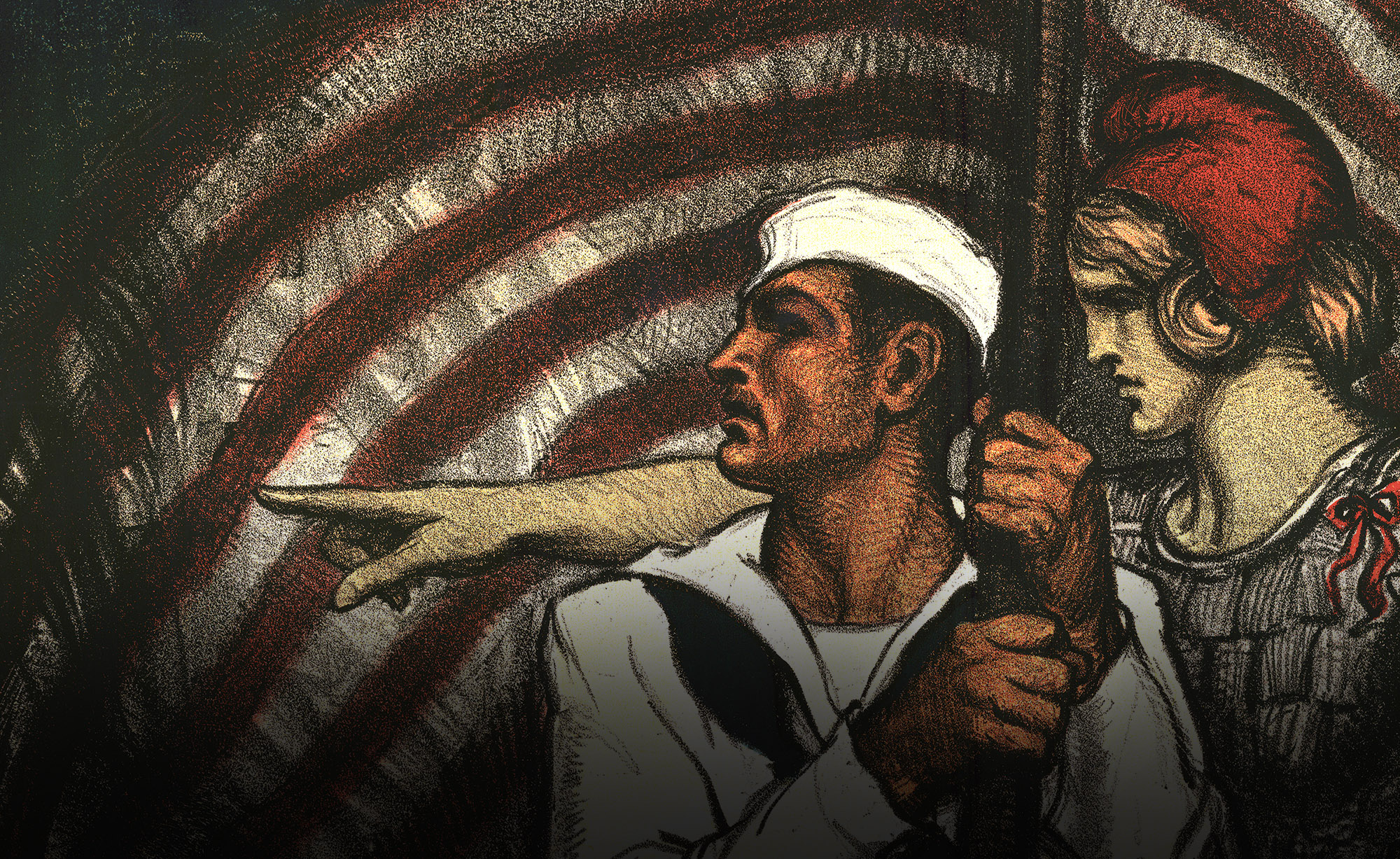Persuasive Weapons explores the militarization of images and words used to mobilize the masses during World War I. This digital exhibit features over 100 examples of WWI propaganda posters housed at The University of Alabama Special Collections representing a broad spectrum of persuasive strategies designed to secure public support for a global conflict that brought unimaginable death and destruction. A century after the signing of the Armistice on November 11, 1918, the world continues to grapple with the haunting legacy of this runaway war that claimed roughly 40 million lives, and set in motion future disasters to come.
The war that erupted in Europe on July 28, 1914, following the assassination of Archduke Franz Ferdinand, has gone by many names, including “World War I,” the “Great War,” and the “war to end all wars.” In addition to these familiar portrayals, WWI was also known as the “poster war,” due to the explosion of propaganda images printed to fundraise, recruit, and silence dissent. Although the United States remained officially neutral until April 1917, America was especially committed to visual warfare from the beginning, printing as many as 20 million posters in support of the war, more than all other nations combined.
This digital collection foregrounds propaganda posters as persuasive weapons, visual/verbal messages aimed at audiences to make war possible. The posters are not necessarily accurate reflections of the past; rather, they are arguments for social conformity, visions for how citizens should behave according to dominant social conventions and government priorities. Persuasive Weapons contains only a fraction of the total number of posters created during WWI, but the exhibit is unique in the level of attention directed toward each image. The posters, organized around the broad themes of food control, fundraising, and recruitment, are each accompanied with a detailed description providing historical context and rhetorical analysis, bringing contemporary viewers closer to a distant war with far reaching consequences that are still coming into focus.
Support for this project in the form of a Strategic Funding Committee Grant was provided by the College of Communication and Information Sciences. Thanks to Special Collections faculty and staff, especially Martha Ann Bace, Dr. Kathryn Matheny, and Dr. Lorraine Madway. Research assistance was provided by Sarah Price and students enrolled in the Spring 2018 section of COM 467/567: Visual Rhetoric.
Dr. Jessy Ohl, Guest Curator, March 2019

